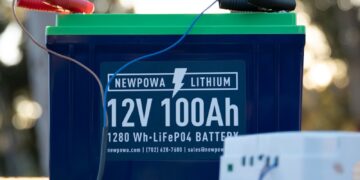In a world racing to combat climate change, eco tech is emerging as a powerhouse of innovation. These cutting-edge solutions—spanning solar, wind, storage, and beyond—are transforming how we generate, store, and use renewable energy. Far from pie-in-the-sky concepts, eco tech is delivering practical answers to some of the planet’s toughest challenges: decarbonizing industries, powering communities, and rethinking resource use. This deep dive explores the trailblazing technologies driving a renewable energy future, spotlighting the innovators behind them and their impact on commerce, infrastructure, and everyday life.
What is Eco Tech?
Eco tech refers to technologies designed to enhance sustainability, with a heavy emphasis on renewable energy and environmental efficiency. Think solar panels that double as building materials, wind turbines that float offshore, or batteries that store summer sun for winter nights. The Ellen MacArthur Foundation frames it as “tech that works with nature, not against it,” a principle guiding inventors and engineers worldwide. It’s not just about reducing emissions—it’s about reimagining systems to thrive long-term.
Solar Power: Beyond the Panel
Solar energy is a cornerstone of eco tech, and innovators are pushing it far beyond traditional rooftops. First Solar has mastered thin-film panels, recycling 90% of materials to cut waste and costs. These lightweight, flexible arrays power everything from warehouses to remote villages, proving scalability can coexist with sustainability. Meanwhile, SolarWindow is turning glass into electricity generators—coating windows with transparent cells that produce power while letting light through. Imagine a skyscraper that’s its own power plant.
On the efficiency front, Oxford PV is revolutionizing solar with perovskite cells, boosting output 20% over standard silicon, according to lab results. These advances don’t just generate energy—they shrink the footprint of production, making solar a go-to for eco-conscious businesses and homeowners alike.
Wind Energy: Harnessing New Heights
Wind power is getting a tech makeover, thanks to eco innovators. Vestas has tackled the recycling challenge, turning old turbine blades into construction materials instead of landfill fodder. Offshore, Principle Power pioneers floating wind platforms—giant turbines anchored in deep waters where winds are stronger and steadier. These systems tap 50% more energy than land-based setups, per the International Energy Agency (IEA), opening vast ocean expanses to clean power.
Airborne wind tech takes it further. Kitepower uses kites tethered to generators, soaring 300 meters up to catch high-altitude gusts. It’s lighter, cheaper, and mobile—perfect for disaster zones or remote sites. These eco tech solutions don’t just spin turbines; they redefine where and how wind can work.
Energy Storage: The Game-Changer
Renewables depend on storage, and eco tech is delivering. Lithium-ion batteries dominate, but innovators are pushing boundaries. QuantumScape is perfecting solid-state batteries, cutting charge times to minutes and extending lifespans—ideal for grid-scale solar backup. Form Energy takes a bolder leap with iron-air batteries, storing energy for 100 hours at a fraction of lithium’s cost. Picture a wind farm powering a city through a weeklong calm.
Beyond batteries, Energy Vault uses gravity—lifting concrete blocks with excess renewable energy, then dropping them to generate power later. It’s low-tech ingenuity with high-tech impact, offering a scalable fix for renewable intermittency, per the World Economic Forum.
Eco Tech in High-Energy Industries
High-energy sectors are eco tech’s proving ground. In manufacturing, steel production—a 7% global emissions culprit—is going green. Sweden’s HYBRIT project swaps coal for hydrogen made with hydropower, aiming for carbon-neutral steel. Early tests cut emissions by 90%, per the World Steel Association, a blueprint for heavy industry.
Data centers, eating up 200 terawatt-hours yearly, are embracing eco tech. Google cools servers with AI-driven systems, slashing energy use by 30%, while Green Mountain in Norway runs on hydropower, serving tech giants with zero-emission hosting. These innovations keep the digital world humming without frying the planet.
Bitcoin mining, infamous for its power hunger, is shifting too. In Iceland, miners harness geothermal energy—volcanic heat turned into electricity—slashing costs and emissions. A Bloomberg report shows these eco tech tweaks make mining viable in a carbon-conscious era.
Land and Eco Tech: A Symbiotic Bond
Landowners are eco tech allies, hosting renewable projects with a twist. Agrivoltaics—solar panels over crops—is a standout. In France, Sun’Agri shades vineyards with adjustable panels, boosting grape yields by 15% while generating power, per field studies. It’s a dual harvest: food and energy from the same plot.
Wind tech adapts too. Wind Harvest builds shorter, multi-rotor turbines that fit smaller parcels, letting farmers host clean power without losing farmland. These innovations turn rural landscapes into eco tech hubs, blending agriculture with sustainability.
Beating Grid Woes with Smart Solutions
Grid instability—overloads, outages—threatens renewable growth. Eco tech fights back. Tesla’s Megapack pairs solar farms with grid-scale batteries, smoothing supply dips. In California, it’s powering neighborhoods through peak demand. Microgrids take it further—Schneider Electric deploys solar-wind hybrids for remote factories, cutting reliance on shaky grids by 50%, per internal data.
Floating solar, like Ciel & Terre’s lake-top arrays, dodges land constraints entirely. These systems cool naturally, boosting efficiency 10%, per the IEA, and power nearby industries without grid strain.
Policy: Fueling the Eco Tech Fire
Government support turbocharges eco tech. The U.S. Inflation Reduction Act pours $370 billion into clean energy, with tax credits for solar and wind, per the U.S. Department of Energy. Europe’s Green Deal funds eco tech R&D, targeting net-zero emissions. Japan’s Green Growth Strategy backs hydrogen and offshore wind innovation.
Carbon taxes, like Canada’s escalating levy, tip the scales—fossil fuels cost more, eco tech wins. These policies don’t just fund—they forge markets for green solutions.
The Innovators: Faces of Change
Eco tech thrives on human ingenuity. Dr. Saifur Rahman, an IEEE fellow, pioneers smart grids that balance renewables in real time, per his research at Virginia Tech. Entrepreneurs like Allonnia tackle waste with bioengineered microbes, cleaning water for hydro plants. Community leaders in Kenya deploy M-KOPA solar kits, powering homes off-grid with pay-as-you-go tech.
These innovators aren’t lone geniuses—they’re connectors, linking tech to people and problems.
Eco Tech’s Ripple Effect
The impact goes beyond energy. Businesses adopting eco tech—like solar-powered retailers—cut costs 10-20%, per a Rocky Mountain Institute report. Communities gain resilience—think microgrids post-hurricane. Jobs boom—renewables employ 12 million globally, per IRENA, outpacing fossil fuels.
Consumers notice—eco tech brands build loyalty in a market where sustainability sells. Suppliers pivot too, crafting greener components to meet demand.
The Roadblocks: Grit Meets Reality
Eco tech isn’t flawless. High upfront costs—$1-2 million for a 1 MW solar setup—challenge smaller players. Supply chains for rare earths, like turbine magnets, wobble, with deficits looming, per the IEA. Policy gaps—like uneven global subsidies—slow adoption. Scaling niche tech, like airborne wind, takes time.
But progress marches on—renewables grow 12% yearly, per the IEA, fueled by relentless innovation.
Conclusion: A Tech-Driven Tomorrow
Eco tech isn’t a fad—it’s the future. From recyclable panels to floating turbines, these solutions are powering a renewable energy age that’s practical, profitable, and planet-friendly. Innovators aren’t waiting for permission—they’re building it, one breakthrough at a time. For businesses, developers, and landowners, the message is simple: embrace eco tech, and you’re not just adapting—you’re leading. The renewable revolution is here, and it’s wired for success.



















